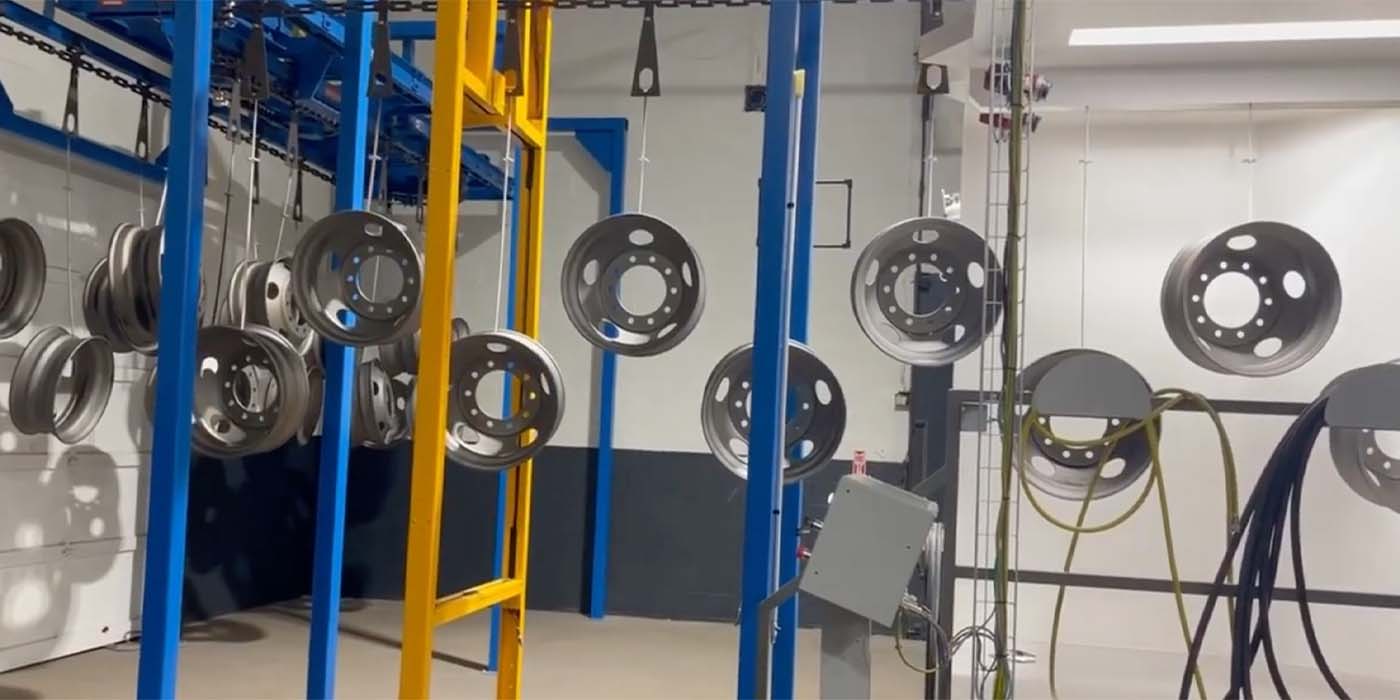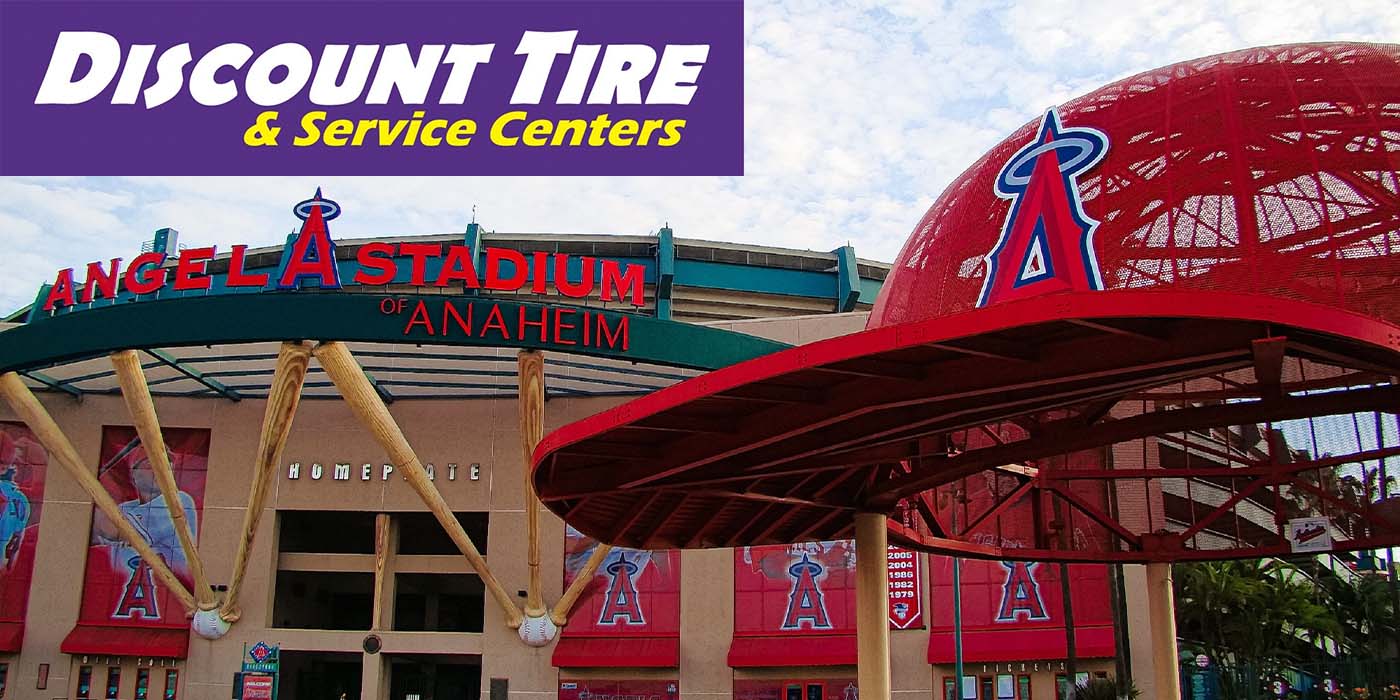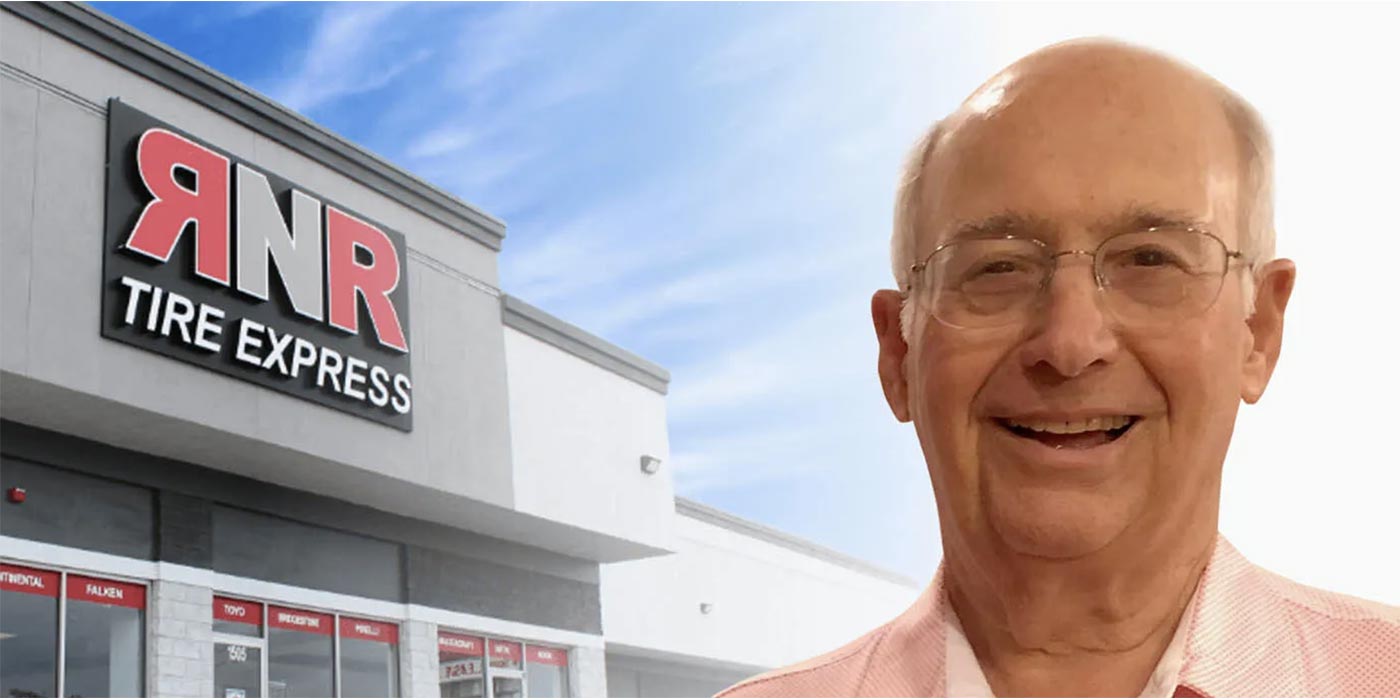More than two years after Congress passed the Energy Bill of 2007, which called for a national tire fuel efficiency testing, labeling and consumer education program, NHTSA finally issued its final regulations last week. Well, sort of.
The agency admitted in its final rule still needed work, particularly in its plans for a consumer education program and a final design for required tire labels, and has deferred implementing the semi-final rule until such details can be worked out. The agency held a public hearing on the consumer education portion of the program on Mar. 26, the day after it released the supposed final rule.
However, for the most part NHTSA nailed down other aspects of the regulations, including setting a firm testing system, what tires are covered under the regulations, tiremaker responsibilities and the future of the current UTQG tire grading system.
Here are key excerpts from the 195-page semi-final rule issued by NHTSA last week: (Click here to download the entire document)
• “The tire fuel efficiency consumer information program will require tire manufacturers to rate their replacement tires for fuel efficiency, safety, and durability based on test procedures specified in this final rule. These test procedures address three aspects of tire performance: rolling resistance, wet traction and treadwear life. As noted above and described in further detail below, rolling resistance is a measurement of fuel efficiency. A measurement of wet traction is intended to indicate a tire’s ability to stop on wet pavement. Thus, wet traction is a metric that measures an aspect of safety. A treadwear rating measures a tire’s wear rate compared with that of control tires. Treadwear life, therefore, is a measure of durability.”
• “Comparing the three different ratings for different replacement tires will enable consumers to see how different replacement tires can affect the fuel economy they are getting from their vehicles. This will also enable consumers to see the tradeoffs they may be facing between fuel efficiency, safety (i.e., wet traction), and durability (i.e., treadwear life), and how the balance of these factors may differ from tire to tire. Providing information regarding all three types of performance will help to ensure that no single aspect is given disproportionate attention.”
• “The agency is specifying the test procedure by which NHTSA will evaluate the accuracy of the rolling resistance rating assigned by the tire manufacturer. For the safety and durability rating, this final rule specifies that the agency will use previously established test procedures for wet traction and treadwear to evaluate the accuracy of the safety and durability ratings assigned by the tire manufacturer, respectively.”
• “NHTSA is not specifying the content or requirements of the consumer information and education portions of the program at this time. In light of the important objectives of this rulemaking, we are continuing to work to improve the content and format of the consumer information so that consumers will, in fact, be adequately informed. Specifically, NHTSA will be conducting additional consumer testing to explore how consumers will best comprehend information in each of the three categories discussed above. After additional consumer testing, NHTSA will publish a new proposal for the consumer information and consumer education portions of this new program.”
• “The Notice of Proposed Rule Making (NPRM) proposed to base a tire’s fuel efficiency rating on rolling resistance force (RRF) as measured by the ISO 28580 (International Organization for Standardization (ISO), ISO 28580:2009(E), Passenger car, truck and bus tires – Methods of measuring rolling resistance – Single point test and correlation of measurement results) test procedure. This is in contrast to basing a fuel efficiency rating on rolling resistance coefficient (RRC), or RRF divided by test load. The proposed European tire fuel efficiency rating system specifies tire ratings based on RRC. NHTSA proposed to base the rolling resistance rating on the RRF metric because such a rating translates more directly to the fuel required to move a tire, and based on the goals of Energy Act of 2007, appears to be a more appropriate metric.”
• “The choice of which test procedure to specify for measuring rolling resistance is important because measuring rolling resistance requires precise instrumentation, calibration, test conditions, and equipment alignment for repeatable results. As explained in detail in the NPRM, agency research shows that all of the available test procedures could meet these requirements. However, the ISO 28580 test method is unique in that it specifies a procedure to correlate results between laboratories and test equipment, which our research shows is a significant source of variation. Because other established test methods lack such a procedure, NHTSA would have to develop a new procedure to address this variation before any of those test methods could be considered. Further, the ISO 28580 test procedure is the specified test method in the proposed European Union Directive, allowing manufacturers to do one test to determine ratings for both proposed regulations. As for the safety and durability ratings, due to the statutory timeline within which this rulemaking must be completed, NHTSA proposed to use traction and treadwear test procedures that are already specified under another tire rating system, the uniform tire quality-grading standards (UTQG).”
• “To convey information to consumers, the NPRM proposed a label that contains an individual tire’s ratings for fuel efficiency (i.e., rolling resistance), safety (i.e., wet traction), and durability (i.e., treadwear), and which was similar to a ratings label that tested well in consumer research conducted by NHTSA. Prior to the NPRM, NHTSA conducted focus group studies in which it presented several labels using different graphics and scales to relay the ratings. The proposed label showed all the ratings on a scale of 0 to 100, with 100 being the best rating. Consumers expressed an understanding of this 0 to 100 scale, and reacted positively to red and green shading, with red indicating lower/worse ratings and green indicating higher/better ratings.”
• “NHTSA proposed that manufacturers be required to report various data to the agency. This is necessary both for enforcement of the rating system, and for development of NHTSA’s tire fuel efficiency Web site, which will contain a database of tire information with a fuel savings estimator tool that allows easy comparison of fuel savings between various replacement tires. Regarding labeling, we proposed to require tire manufacturers to print the tire fuel efficiency graphic in color along with any other information manufacturers include on an existing paper label on the tire.”
• “As for requirements for tire retailers, we proposed a requirement that the paper label containing the new rating information must remain on the tire until the sale of the tire. The label refers consumers to the agency’s Web site for further information about the ratings. We also proposed a requirement that tire retailers must display a poster that NHTSA would print and distribute that would explain the rating system and encourage consumers to compare ratings across tires. Finally, for tire manufacturers and retailers that maintain a Web site, the agency proposed to require those Web sites to link to the comprehensive tire Web site we will be developing as part of the national tire maintenance consumer education program. The agency also sought comments on any other information dissemination requirements that would ensure that easy-to-understand information is conveyed in a way that is most likely to impact consumers’ decisions and, thus, affect their behavior and save them and our nation fuel and money.”
• “Preliminary Regulatory Impact Analysis (PRIA) estimated the annual cost of NHTSA’s proposal to be between $18.9 and $52.8 million. This included testing costs of $22,500, reporting costs of around $113,000, labeling costs of around $9 million, costs to the Federal government of $1.28 million, and costs of between $8.4 and $42 million to improve tires. In addition, NHTSA anticipated one-time costs of around $4 million, including initial testing costs of $3.7 million and reporting start-up costs of $280,000.”
• “The ISO 28580 test method is unique in that it specifies a procedure to correlate results between different test equipment (i.e., different rolling resistance test machines). This is important because our research shows that machine-to-machine differences are a significant source of variation. As discussed below, the ISO has not yet completed all aspects of this procedure. NHTSA is nonetheless specifying the ISO 28580 test procedure in this final rule because EISA specifically directs the agency to avoid the type of significant variation that the ISO 28580 lab alignment procedure takes into account, but other established test methods do not. Further, the ISO 28580 test procedure is the specified test method in the European Union Directive and in the staff recommendations for a California regulation, allowing manufacturers to do one test to determine ratings for multiple regulations. Because the ISO has not yet specified a reference lab for the ISO 28580 test procedure, NHTSA must specify this laboratory for the purposes of implementing this rule so that tire manufacturers know the identity of the machine against which they may correlate their test results. In the near future, NHTSA will announce one or more private laboratories to operate the reference test machine(s) for the tire fuel efficiency consumer information program.”
• “Because bias ply tires are included in the scope of the tire fuel efficiency consumer information program, NHTSA is also specifying a break-in procedure for bias ply tires, in order to warm up these types of tires up before ISO 28580 testing. This roadwheel break-in procedure that will be used for bias ply tires is adopted from already established Federal motor vehicle safety standards.”
• “As for the safety and durability ratings, NHTSA is specifying the use of the test procedures that are already specified under the UTQGS. For the traction test, because we are requiring the collection of slightly different data than under the UTQGS traction test method, a one-time modification in the software used in the test equipment may be necessary. The agency will continue to examine other metrics to see if they could prove more effective in providing consumer information about safety and durability.”
• “NHTSA is requiring that tire manufacturers report the three ratings for each tire to the agency. Unlike the proposed data reporting requirements, NHTSA is not requiring manufacturers to report test measurements. This is due to concerns that this information being public could cause competitive harm to tire manufacturers. Requiring the submission of such data would make public each manufacturer’s statistical approach to risk in terms of how each NHTSA will also require tire manufacturers to report which tire models and sizes are excluded from the scope of this program, and thus not rated, because this information would be useful to consumers who wish to understand which tires are not rated and why. For manufacturers that are otherwise required to report ratings data, this information should be included with those data submissions. For manufacturers that only produce limited production tires, or other tires that are excluded from the applicability of today’s program, these manufacturers must provide a one-time list of each one of its tire models/sizes, and a statement that every one of its tire models/sizes is excluded from the applicability of this regulation and, thus, is not rated. NHTSA will make this information on which tires are excluded from the new rating system available on its tire Web site.”
• “NHTSA is retaining the UTQGS requirements at this time, including the UTQGS treadwear, traction, and temperature resistance ratings. However, if a future final rule finalizes that ratings under the tire fuel efficiency consumer information program must be printed on a paper label on each passenger car replacement tire, NHTSA will consider removing the UTQGS requirement of molding UTQGS ratings onto tires, and the UTQGS requirement of printing UTQGS information on the paper tire label when a tire is labeled in accordance with the tire fuel efficiency consumer information program requirements. The requirements to report UTQGS grading information to NHTSA would remain. As such, the UTQGS ratings would still be available to interested consumers, vehicle manufacturers, and tire retailers, but a consumer looking at a tire would not be confronted with different and confusing rating scales. NHTSA wants to study further the likely consequences of discontinuing the temperature resistance rating before making a decision about the future UTQGS requirements. NHTSA is making no changes to UTQGS requirements in this final rule.”
• “Section 575.104 of title 49 CFR is the federal regulation that requires motor vehicle and tire manufacturers and tire brand name owners to provide information indicating the relative performance of passenger car tires in the areas of treadwear, traction, and temperature resistance. Section 575.104 applies only to ‘new pneumatic tires for use on passenger cars … [but] … does not apply to deep tread, winter-type snow tires, space-saver or temporary use spare tires, tires with nominal rim diameters of 12 inches or less, or to limited production tires as defined in [49 CFR § 575.104(c)(2)].’ Accordingly, the tire fuel efficiency consumer information program described in today’s notice applies only to replacement passenger car tires with the same exclusions as the UTQGS regulation.”
• “The tire fuel efficiency portion of the Energy Act of 2007 ‘apply only to replacement tires covered under [49 CFR] section 575.104(c)’ (NHTSA’s UTQGS regulation). The law excludes replacement LT tires from the tire fuel efficiency consumer information program, and includes P-metric or euro-metric sizes only. As noted in the NPRM, the agency expects test data to be available for many LT tires, as these tires are covered by the Europe and California programs, in addition to some LT tires having been included in NHTSA’s Phase 1 research for this rulemaking.”
• [The new regulations cover only replacement tires, but this includes OE tires sold into the replacement market, such as OE downstreams or those sold to car dealers as direct OE replacements.]
• “NHTSA’s research included testing of LT tires even though we are not authorized to regulate them through this tire fuel efficiency consumer information program. NHTSA notes that it expects test data to be available for many LT tires, as these tires are covered by the Europe and California programs. Nothing in this regulation would prohibit manufacturers from voluntarily rating or reporting data for LT or other excluded tires, as required for covered tires.”
• “NHTSA concludes, as the agency did in the NPRM, that it is not reasonable or necessary to require a physically-tested value of rolling resistance, traction, or treadwear test value for every combination of tire model, construction, and size (SKU). NHTSA is not requiring tire manufacturers to report a test procedure value for rolling resistance, traction, and treadwear for each different SKU. NHTSA explained that a tire manufacturer would be free to reasonably estimate the test values it would report, and the agency sought comment on this approach. Research also indicated that it could take up to 2.7 years to test one tire of each SKU once.”
• ”NHTSA is not requiring tire manufacturers to report test values to the agency, but merely the actual ratings it is assigning to each tire SKU. The agency will continue to not require any amount of actual testing in the regulations for this rating program. First, the Energy Act of 2007 does not require particular tests. Second, as noted above, a tire manufacturer has the ability to estimate with relative accuracy the test values of a tire with a given size specification if it knows the test value of a tire in the same model line. NHTSA agrees with RMA’s understanding of the industry that tire manufacturers routinely develop and utilize accurate computer models to predict tire performance of tires not physically tested, using information available for similar tires.”
• “A tire manufacturer will be responsible for the accuracy of the ratings they report to NHTSA and otherwise communicate to consumers. That is, for compliance purposes, NHTSA will test any rated tire according to the test procedures specified in the regulation (regardless of whether or not the tire manufacturer has tested this tire), and if the rolling resistance, traction, or treadwear test value falls outside of NHTSA’s specified tolerance range, the agency will consider that rating a noncompliance.”
• “Section 32101 of Title 49 of the U.S.C. defines manufacturer as “a person (A) manufacturing or assembling passenger motor vehicles or passenger motor vehicle equipment; or (B) importing motor vehicles or motor vehicle equipment for resale.” Thus, for all sections under Part C, including section 32304A, the importer of any tire is a tire manufacturer. An importer is responsible for every tire it imports and is subject to civil penalties in the event of any violations. The U.S. Customs and Border Protection may deny entry at the port to items that do not conform to applicable requirements.”
• “As to private label manufacturers, NHTSA assumes it refers to when tire manufacturers produce tires under contract with private companies such as Sears, Pep Boys, Discount Tire, etc. These private entities then sell those tires under its house-brand trade names, e.g., Sears brand tires, Pep Boys brand tires, etc. NHTSA intended this regulation to treat a tire brand name owner as a manufacturer in the case of tires marketed under a brand name different from the manufacturer name. This is clear in the regulation which requires tire manufacturers and tire brand name owners to rate all replacement passenger car tires for fuel efficiency (i.e., rolling resistance), safety (i.e., wet traction), and durability (i.e., treadwear), and submit those ratings to NHTSA. In the final regulatory text, NHTSA has added a definition of brand name owner for clarity.”
• “NHTSA is modifying the definition of tire retailer to be in terms of the purpose of the sale of the tire. Today’s final rule defines tire retailer to mean ‘a dealer or distributor of new replacement passenger car tires sold for use on passenger cars, multipurpose passenger vehicles, and trucks, that have a gross vehicle weight rating (GVWR) of 10,000 pounds or less.’ A retailer that sells tires only for use on trailers would not be within this definition.”
Finally, the semi-final rule does not require that labels be affixed to tires in existing inventory, only those produced after the rule goes into effect.
The penalty for violating the rule is liable as a “civil penalty of not more than $50,000 for each violation.”
As for possible conflicts with California’s tire fuel efficiency rating scheme, NHTSA stated “that it is ultimately a court, not NHTSA, which would determine whether or not future regulations established by the State of California are preempted under Federal law.”













